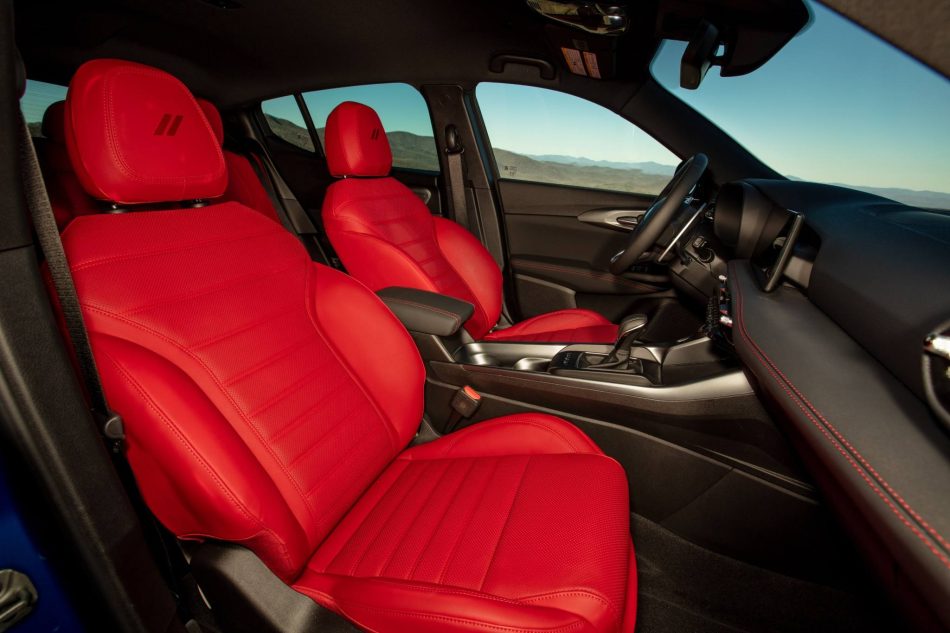SENIORS TAKE THE STAGE AT COLORADO SENIOR OPEN IN AUGUST
What to know about this year’s Colorado Senior Open
By Isaac Bouchard
The Dodge Hornet, a compact SUV twinned with the Alfa Romeo Tonale (both companies being part of Stellantis) comes in two basic forms: GT, which sports a 2-liter, turbocharged engine with outputs of 268hp & 295lb-ft, and the R/T, a plugin hybrid, with a 288-hp combo of 1.3L turbo and two electric motors. It’s juiced by a 12-kWh battery; the range is up to 32 miles on electricity. I leased the PHEV version a few months ago and was interested in how they compare, as I am quite smitten with the R/T.
The basic shape of the Hornet is fairly unique in the segment, but it benefits from the bigger, 20-inch wheels that come as part of the Track Package. Without these, it looks somewhat blobby. The front fascia is innocuous, especially compared to the Alfa, and it doesn’t say Dodge anywhere outside, which leads to a fair number of questions.

The Dodge is about class-average in terms of quality of interior materials. An example is the high-quality main dash molding, which abuts a shiny, cheap piece. That one is situated just below the windshield, meaning you never lose sight of cost-cutting. That said, the steering wheel is a beautiful item, the digital gauges and touchscreen are bright and easy to navigate, and the UConnect software that runs the latter is generally superb. Front seating is comfortable and supportive, while the back is tight, as is the cargo room. Hornets can be basic in equipment or very loaded, depending on option packages.
The Hornet GT drives like the European car it is, with incisive steering, good body control and a dash of verve. It also rides well in basic spec on its 18-inch wheels with their taller, more absorbent sidewalls, equipped with the optional Track Pack, there are adjustable dampers to keep it comfy in normal mode, despite the 20-inch wheels. Unfortunately, dialing things up to Sport to have better throttle response and faster shifts from the 9-speed transmission makes it quite firm over rough roads or concrete highway slabs.
All Hornets are fairly quiet in terms of road and wind noise, but not refined in the way of more luxurious sporty SUVs. The GT’s gas engine sounds better than the overly gruff note from my own R/T, but that model’s electric motor assist makes it quieter and more soothing—at least until the battery gets depleted. 0-60 takes about 5.5 seconds in either, so they’re quite quick, though the way they go about making speed is different. The GT hits boost sooner and rides a longer torque wave, but because there are no electric motors, shifts seem more obvious. Another way to say it is that the R/T PHEV is more fun when charged, while the GT makes a better bet for those who cannot plug it in on a daily basis.

For Colorado residents, the biggest difference comes down to lease payments. The GT is priced price competitively. However, the plugin can qualify for up to $5,650 in state tax credits and $6,000 from our VXC (vehicle exchange) program, which are applied as rebates. Combined with the super-low interest that substitutes for the $7,500 federal tax incentive that the Hornet doesn’t qualify for—because it is built in Italy—payments are in the $300-400 range per month on the R/T. The GT is a competent machine, while the R/T strikes me as the really compelling Hornet offering, based on payment and how pleasing it is when charged.
EPA Ratings: 21/29/24mpg
0-60mph: 5.5sec
Price as tested: $40,215
Rating: 3.5 Stars
Here is what Dodge has to say.
Colorado AvidGolfer Magazine is the state’s leading resource for golf and the lifestyle that surrounds it, publishing eight issues annually and proudly delivering daily content via coloradoavidgolfer.com.
What to know about this year’s Colorado Senior Open
Help your game this summer at the Insiprato Colorado Open